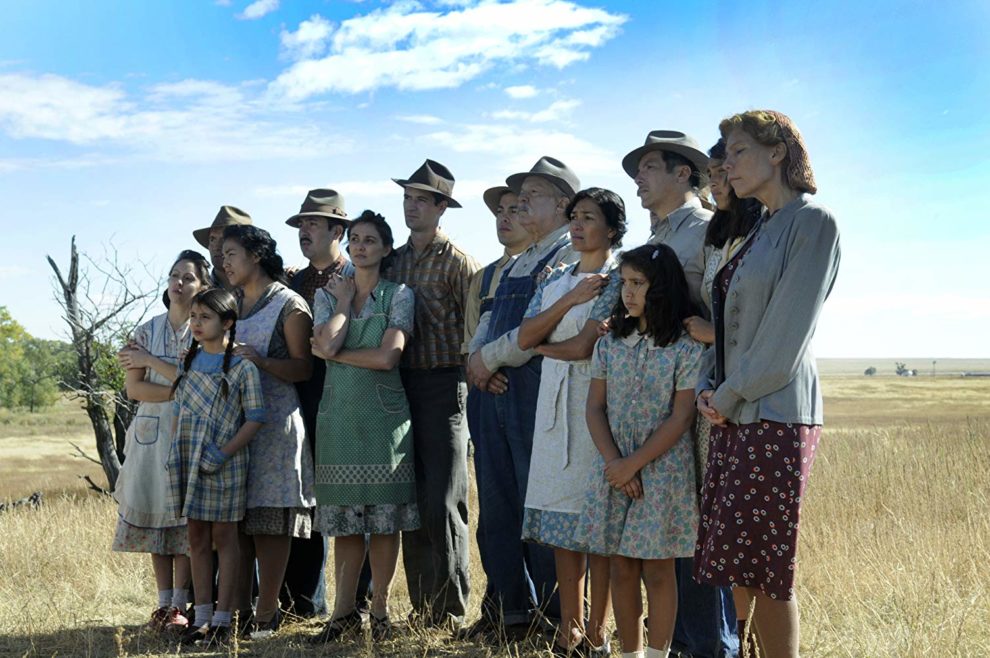“Bless Me, Ultima” by Rudolfo Anaya is a book that can be found on your abuela’s bookshelf, in the hands of a middle schooler, or on the list of most commonly challenged books in the United States. Since its publication in 1972, “Bless Me, Ultima” has captured the hearts of a wide population, and found a special place in the hearts of Chicanos.
Anaya’s first novel, Bless Me, Ultima, is a coming of age novel that captures Antonio Maez y Luna’s experience of growing up in rural New Mexico with his family and the visiting curandera, Ultima.
Antonio, or Tony, is a seven-year-old who loves to fish, pick herbs with Ultima, and run the fields with his friends. However, Antonio is different. His difference lies in his emotional intelligence and in his draw to the big philosophical questions of life: Who am I? What do I believe? What is my destiny?
These questions haunt Antonio throughout the novel. In the first chapter, Uno, Antonio slips into a dream sequence that illuminates the moments of his own birth. His mother is there with Ultima and the cooing baby is greeted by two parties with starkly different gifts.
The “Lunas”, Antonio’s mother’s family, are the first to visit. They are humble farmers who are full of peace, calm, and the deep presence of the land. They lay the first fruits of the labors among the child and smear “the dark earth of the river valley on the baby’s forehead.”
These gifts from the Lunas attempt to solidify Antonio’s destiny as a Luna blooded farmer. The second group of visitors are the Marez men, Antonio’s father’s family, are the second visitors to the birth chamber, but unlike the Lunas they do not bring calm and peace.
The Marez men are vaqueros. They are the wanders. They are the men of high spirits and untempered drinking. The enter the room and lay a saddle, a bottle of whiskey, and an old guitar on top of the fruits and vegetables of the Lunas. These gifts from the Maez men attempt to solidify Antonio’s destiny as a Maez blooded vaquero.
This vivid scene is encountered in the first pages of the novel and it perfectly encapsulates the questions that Antonio will wrestle with for the rest of the novel: Who am I? What do I believe? What is my destiny? Antonio is both Luna and Maez, he possesses both bloodlines. Yet, he finds himself conflicted about his identity and the life that lays ahead of him.
His mother dreams of him to either be a farmer or the town Priest. His father dreams of his son living a life of freedom as a vaquero. Gabriel, Antonio’s father, desires Antonio to live a life that he himself cannot have because he has been restrained to the domestic life with his Luna.
Antonio, our young philosophical protagonist, ponders his identity and his destiny for the duration of the novel. Will he be a Luna Priest? Will he embrace the wild blood of the Maez men? Luckily, Antonio has a guiding light who brings clarity and peace to the taxing questions of his life. Her name is Ultima, the curandera, the Grande.
Ultima is a renowned curandera in rural New Mexico. A curandera is a traditional healer who employs herbs and other natural elements to heal individuals emotionally, physically, psychologically, and spiritually. Her healing capabilities are strong and she is admired by all, especially the young Antonio.
Ultima and Antonio quickly become inseparable once she comes to live with him and his family. They spend quality time together while they roam the hills in search of healing herbs. It is during these hunting sessions that Antonio shares his conflicted soul with the wise Grande. He is a young boy full of questions. He desires truth that falls clearly into the polars of black and white.
He seeks peace from Ultima.
These perplexing questions of identity and destiny rest easy on the ears of Ultima. She comforts Antonio by reminding him to not “see in parts” but to look “beyond into the great cycle.” Her peaceful wisdom brings peace to Antonio, and to all readers of “Bless Me, Ultima.”
Ultima’s wisdom impacts every reader that picks up Bless Me, Ultima. Ultima reminds us that life does not fall into the polars of black and white. Instead, the “magic” of life is found in the gray areas. Ultima reminds us that our identity is not in our family, our family’s religion, or society’s ideas.
Instead, our self is in our total control and there is “magic” in embracing your own identity and ideals. These truths are intended for the young ears of Antonio, but they serve as strong reminders for all readers of Anaya’s “Bless Me, Ultima.”
For this reason, “Bless Me, Ultima” has become a well-loved novel for all, but especially to the Chicano population. This book resonates with Chicanos because it reminds the reader of their family’s foundations, their family’s cultural practices, and every Chicano’s conflict with their mestizo identity.
It is a book that addresses the big philosophical questions of life, but in a way that is entertaining and accessible to all. Therefore, if you’re looking for a book to nostalgically recall your Chicano grandmother or seek a deeper understanding of self, I would recommend “Bless Me, Ultima” for your next read.












